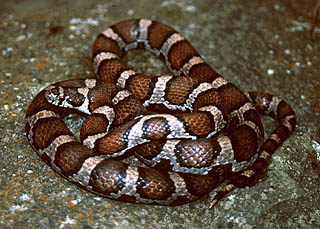

This group will not tolerate hate speech, harassment of users, doxing, racial or homophobic slurs, or any other hate related comments. Breed ID requests for dogs and cats will be removed. This group is for identifying species not breeds of domestic dogs or cats. Insect ID requests should be posted in /r/whatsthisbug or /r/pestcontrol or another insect-related group. Other posts with no ID request will be removed. The primary purpose of all posts should be to identify the species of animal in a photo, video, or audio file. Provide a location if you have a picture or not. It is best if you have a picture, if not, a good description.

Interested in learning more about Chesapeake wildlife? Check out our Field Guide for information on hundreds of local species.Have a picture of an animal you need identified? Post it here and let the collective consciousness of reddit ID it for you! If you’re lucky enough to see one of these snakes, use some of the identification tips listed above to differentiate it from some of our other resident snakes, but always remember to view wildlife from a respectful distance, whether they’re venomous or not. Many people developed a fear of milksnakes, not realizing that they provide natural pest control of agricultural areas. A myth developed that the snakes were attracted to the cow milk, but they were actually there to eat the rodents that were making homes in the barns. The name “milksnake” might have come from one of the places where they were most commonly spotted: in farmers’ barns. They eat a wide variety of prey including other snakes, amphibians, rodents, insects, fish and small birds. Milksnakes prefer to live in forested areas but will also be happy in barns and agricultural areas. However, the milk snake is not venomous or poisonous, not matter how badly it wants to be. Red on black, friend of Jack."īeyond color variations, some misidentifications can be blamed on milksnake behavior, as it has been known to shake its tail to imitate a rattlesnake if it feels threatened. To remember, use the rhyme "Red on yellow kills a fellow. The bright red of the milksnake can also cause people to confuse it with the venomous coral snake, but you can tell the two apart by the yellow band that lines a coral snake and not a milksnake. But unlike the copperhead, the milksnake has round pupils, the pattern on its back looks like spots rather than an hourglass shape and its belly has a checkerboard pattern as opposed to a solid cream color. When the milksnake takes on a darker tan color it is commonly mistaken for the venomous copperhead snake. Milksnakes exhibit what’s known as Batesian mimicry, which is when a harmless species evolves to look like a dangerous species to keep itself safe from predators. However, considering the wide variety of tones displayed by milksnakes, the color is not a significant indicator of age. Each snake displays its most intense colors when it hatches and will become darker as it grows. The critter is known for its display of brilliant red spots surrounded by black borders and off-white stripes, though the coloration of the snake can vary greatly depending on what region it’s living in.Their base color can range from cream to tan to a light grey and the large red spots can vary from a vivid, bright red to a darker copper color. The beauty of the eastern milksnake is rarely seen due to the reptile’s habit of burrowing underground and hiding under rocks and logs, but even if you do see one, they can be particularly tricky to identify. 1/3 (Photo courtesy of dfambro/iNaturalist CC BY-NC) (An eastern milksnake in Cockeysville, Maryland shows the bright red blotches and cream-colored base that milksnakes are known for.


 0 kommentar(er)
0 kommentar(er)
